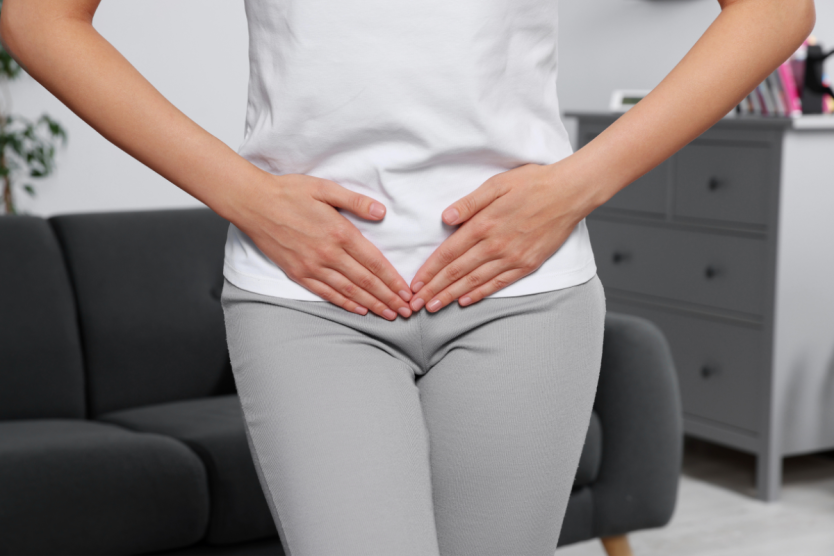As the old saying goes: An ounce of prevention is worth a pound of cure.
Looking after your health is better than dealing with a condition once you have it. For women, that includes paying attention to their pelvic health. It might not be discussed as often as heart health, for instance, or breast self exams, but your pelvic well being is vital too. If there is something wrong, it’s worth identifying it and getting early treatment.
Here are the main causes of pelvic health issues for women.
Why Pelvic Health Is Important
Pelvic health means having healthy pelvic organs, and also a healthy pelvic floor. What is the pelvic floor? It’s the ligaments, muscles and nerves that act like a hammock, supporting your bladder, uterus, vagina and rectum.
Here’s why your pelvic floor is so important:1
- it’s responsible for supporting the function of urination and bowel movements
- it also supports your pregnancy and delivery of children
- it keeps the bladder, intestines and reproductive organs in place
When things go wrong, the various conditions are known as pelvic floor dysfunction (PFD). That’s when you can’t correctly relax and coordinate your pelvic floor muscles. While it is true that some women have pelvic floor muscles that are too tight, most PFDs are caused by weakened pelvic floor muscles. Being mindful of your pelvic health and watching for any problems should be a priority.1
What Are the Main Causes of Pelvic Health Issues
PFDs include bladder control problems, bowel control problems, and pelvic organ prolapse. It’s estimated that one in three women will experience a pelvic floor disorder in her lifetime.2
Here are the main causes:
1. Pregnancy and childbirth
Some studies show that:
- among first-time mothers, mode of delivery—such as vaginal versus surgical—was linked to risk for PFDs
- the risk increases with the number of children a woman has delivered
- the risk may be greater if forceps or a vacuum device is used during delivery
But it’s important to note that it isn’t a completely clear connection, since delivering via cesarean section only reduces but does not eliminate the risk of pelvic floor problems.3
2. Factors that put pressure on the pelvic floor
Even women who have never been pregnant can have pelvic floor dysfunction. For instance, obesity can contribute to risk.4 That’s because being overweight puts strain on the pelvic floor. Here are other risk factors:3
- chronic constipation or chronic straining to have a bowel movement
- heavy lifting
- chronic coughing from smoking or health problems
3. Getting older
The natural act of aging can weaken muscles. For one, the lack of estrogen that happens during menopause thins the pelvic support structures and tissue. Muscles in general weaken as women age and during menopause.5
4. Having weaker tissues
Heredity has an influence. Some women are born with conditions that affect the strength of connective tissues, and in turn may be more likely to have pelvic conditions.3 Also, a family history of pelvic floor issues can be a factor.4
5. Surgery
Previous pelvic surgery such as hysterectomy is associated with higher risk of PFDs.3
6. Race
Certain groups of women, such as white or Latina women, appear to be at higher risks for some forms of PFDs.3
What Can I Do About My Pelvic Health Issue?
If you have a pelvic condition, or you’re interested in minimizing risk or preventing an issue, one of the best habits you can adopt is performing pelvic floor exercises. Known as Kegels, the act of clenching and releasing those deep muscles can pay benefits for women who already have a problem, as well as strengthening muscles to prevent problems.
Research has proven that pelvic floor exercises help keep pelvic floor muscles “fit,” preventing issues. This type of exercise can also be used as an effective treatment for women suffering with a PDF, like the common condition known as stress urinary incontinence.
If you’re not sure you are doing them properly, you can use a product like Gynesis. Gynesis FDA-cleared pelvic floor trainer shorts support women to take control of their pelvic health with a simple, effective, external, and accessible solution. Using advanced Multipath Technology, Gynesis delivers targeted muscle stimulation with Kegel exercises that helps retrain and rebuild your pelvic floor—so you can achieve stronger bladder control and with confidence.
A strong pelvic floor can help combat the main causes of pelvic health issues.
Talk To Your Doctor
If you’re concerned about your pelvic health, or suspect you could have a pelvic floor disorder, use our Physician Finder to find a doctor near you with expertise in women’s health. Discussing your concerns with a health care provider is the first step to diagnosis and treatment. The more you know about your pelvic health, the better.
















